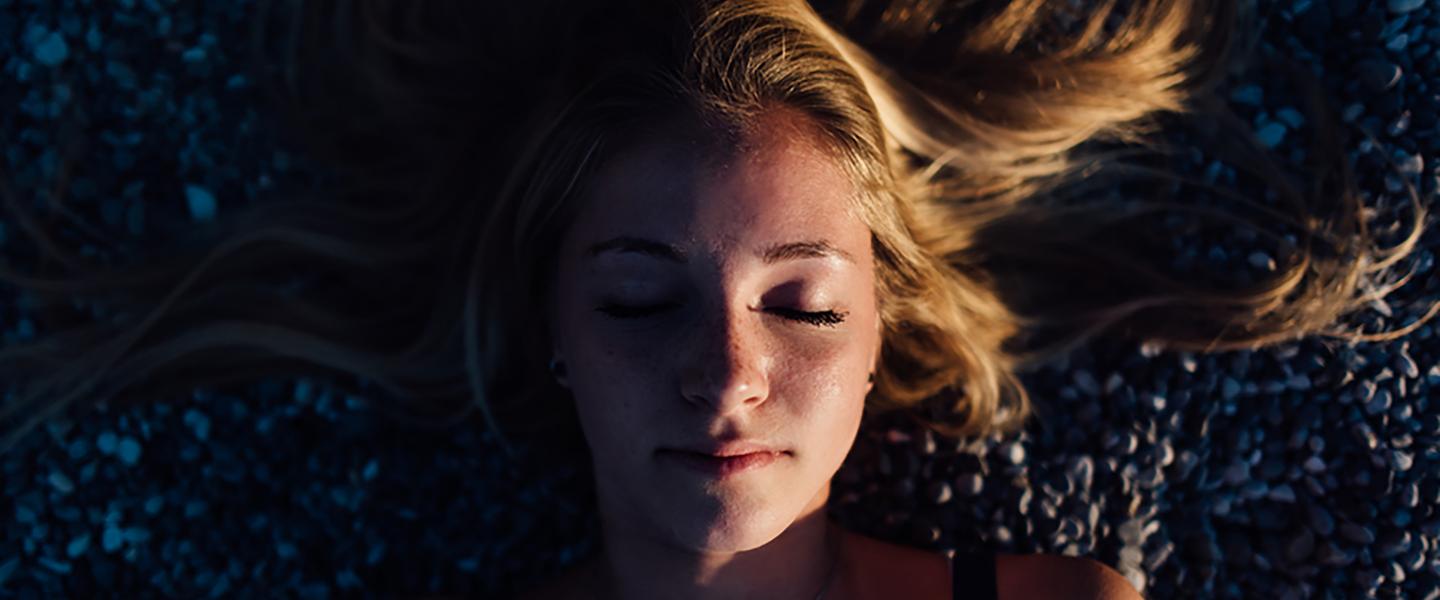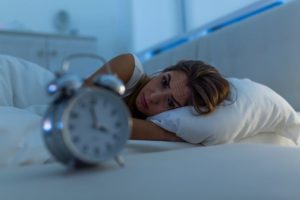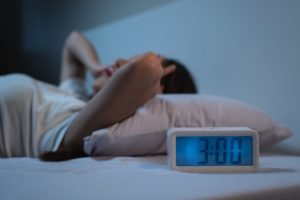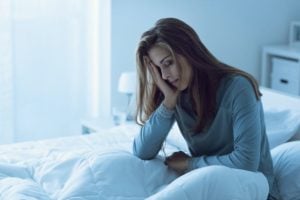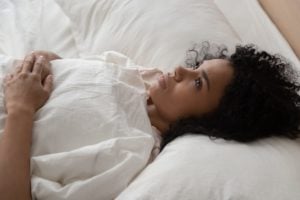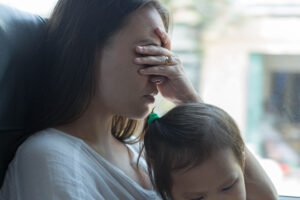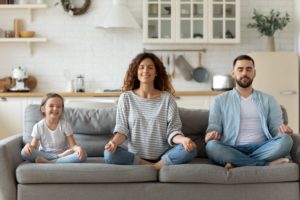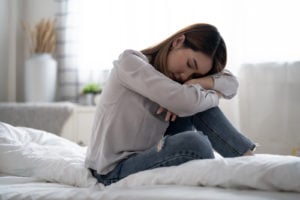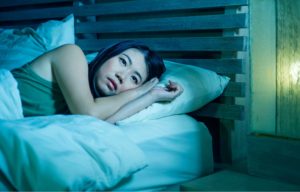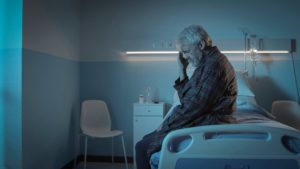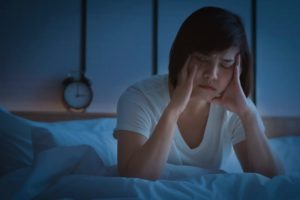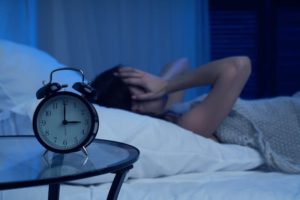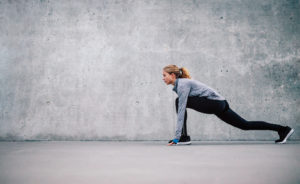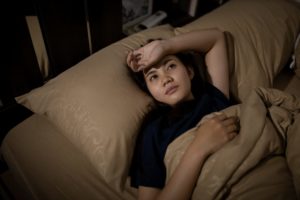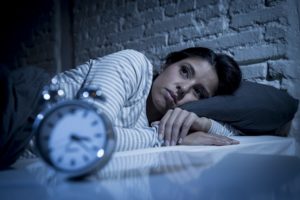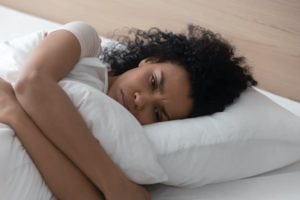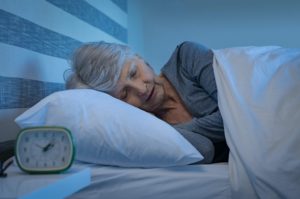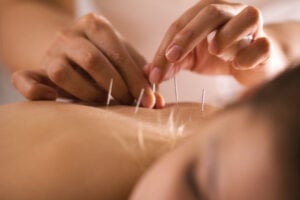Light Therapy for Insomnia Sufferers
You know you sleep better when it’s dark, but did you know light — at the right times — can help you sleep better, too? The connection between light and sleep is stronger than you may think. For some people with insomnia and circadian rhythm sleep disorders, light therapy can help relieve their sleep issues.
Read on to learn more about light therapy, how it works, and what conditions it can help treat.
What Is Light Therapy?
Light therapy is a type of therapy designed to treat certain health conditions through exposure to artificial light. During a light therapy session, the person sits in front of a specialized device, known as a light therapy box, that emits bright light similar to natural sunlight. Light therapy is also known as light exposure therapy, circadian light therapy, bright light therapy, or phototherapy.
Light therapy can be helpful for people with insomnia, circadian rhythm sleep disorders, and some types of depression. In particular, your doctor may recommend light therapy if you experience sleep issues related to:
- Insomnia
- Circadian rhythm sleep disorder
- Seasonal affective disorder (SAD)
- Depression
- Jet lag
- Working an overnight schedule
- Alzheimer’s disease or dementia
How Does Light Therapy Work?
Light therapy is fairly straightforward. You sit in front of a special light box or visor , designed for light therapy, for a set amount of time each day. To avoid damage, the light should shine into your eyes indirectly, not directly. The light boxes intended for light therapy emit strong light that mimics outdoor light, but without the harmful UV rays.
Typically, patients use a light box with a light intensity measuring 10,000 lux , positioned between 16 to 24 inches away from the face. At this intensity, sessions may only last 20 to 40 minutes , with longer sessions proving more beneficial. If using a lower-intensity device, such as 2,500 lux, the session may be as long as 2 hours.
When used consistently and as recommended by a doctor, exposure to this light helps reset your circadian rhythm — the technical term for your body clock. As a result, individuals undergoing light therapy are better able to fall asleep earlier at night, or sleep in later in the morning, depending on what they need.
What’s the Science Behind Light Therapy and Sleep?
Your circadian rhythm dictates when you feel tired, when you feel alert, when you’re hungry, and several other bodily processes. Scientists call it your circadian rhythm because it roughly follows the same 24-hour cycle as the sun (the word “circadian” comes from the Latin words for “about” and “day”). By exposing your eyes to light similar to sunlight, light therapy helps realign your circadian rhythm with the patterns of the sun.
Specifically, during a light therapy session, your eyes’ retinal cells perceive the light from the light therapy box, affecting certain chemicals in your brain . These chemicals are melatonin and serotonin, and they’re responsible for regulating your sleep-wake cycle. The perception of light delays your brain’s melatonin production, waking you up and lifting your mood.
Many people experiencing circadian-related sleep issues are what researchers called “phase-delayed”. This refers to having an internal body clock that functions “behind” a normal circadian rhythm. Because light is the strongest cue for training your circadian rhythm, light therapy tends to be most effective when practiced daily in the morning.
However, light therapy can be just as helpful for individuals who are phase-advanced and feel tired very early in the evening, such as someone who works an overnight night shift. For these individuals, afternoon or evening light therapy can be helpful.

What Can Light Therapy Help With?
Light therapy can help relieve sleep issues associated with insomnia, circadian rhythm sleep disorders, jet lag, seasonal affective disorder, and depression.
Insomnia
Insomnia describes a consistent difficulty falling asleep, staying asleep, or lack of overall quality sleep. When experienced multiple times a week for three months or more, it’s considered chronic. Insomnia can occur on its own, or it may be comorbid with a mental health disorder like depression or anxiety, Alzheimer’s disease and dementia, or another health condition. Light therapy can be effective in relieving insomnia in many of these cases.
Circadian Rhythm Sleep Disorders
Some people experience insomnia due to an underlying circadian rhythm sleep disorder. These sleep disorders can develop naturally, as in the case of extreme night owls, or they can be brought on by working an overnight schedule. Even jet lag is technically a circadian rhythm sleep disorder. Light therapy is one of the primary treatments for these disorders.
Jet Lag
Jet lag occurs when your body travels across time zones, and your circadian rhythm remains synchronized with your old location. Until it catches up to your new location, you can feel sleepy in the middle of the day or wake up at 3 am. Simply spending time outside can be a powerful treatment for jet lag, by helping your biological clock realign to the sun. Although, light therapy may help accelerate this process in cases of extreme jet lag when you’ve traveled across several time zones.
Seasonal Affective Disorder
Seasonal affective disorder is a form of seasonal depression. For most people, it occurs in the fall and winter, although some experience it in the spring and summer. SAD is brought on by the changes in sunlight associated with the changing of the seasons, and it can vary in intensity depending on how far from the equator you live. Sleep issues often include difficulty falling asleep and hypersomnia, a tendency to continue feeling sleepy despite getting ten or more hours of sleep per night.
Individuals with SAD have difficulty regulating serotonin , and overproduce melatonin, resulting in depressed mood and lethargy. Light therapy can lift their mood and have an antidepressant effect . One study found that just one 1-hour session of light therapy can significantly reduce depression scores for individuals with SAD. Light therapy can also prevent SAD symptoms in the first place. When compared to those receiving no therapy, individuals with SAD who practice light therapy during the winter are 36% less likely to experience a depressive episode.
Depression
Individuals with non-seasonal depression also commonly experience sleep issues , including insomnia, hypersomnia, and excessive daytime sleepiness. While the research is less conclusive, light therapy also seems to benefit individuals with non-seasonal depression . Light therapy alone can be beneficial for these individuals, although light therapy in combination with an antidepressant tends to be more effective .
Can You Do Light Therapy at Home?
Part of the beauty of light therapy is its accessibility. You can even do light therapy at home. There are a wide variety of light therapy products that allow you to easily integrate light therapy sessions into your daily life. You can read, write, talk on the phone, use your computer, cook, and more, all while practicing light therapy.
You can purchase light therapy boxes online and in stores. In some cases, they are covered by insurance. Light therapy boxes come in all shapes and sizes, including:
- Tablet-like devices
- Floor lamps
- Desk lamps
- Table lamps
- Alarm clocks
- Wearable visors
It’s important to note that some light therapy boxes are designed for insomnia and sleep disorders, while others are designed to treat skin disorders like psoriasis . Only light boxes designed to relieve sleep and mood symptoms filter out UV light, whereas ones for skin disorders don’t — so ensure the light box you’re considering emits most if not all UV light.
Is Light Therapy Safe?
Light therapy is generally considered very safe. Although, some patients experience side effects when performing light therapy, including eye strain, headache, nausea, hyperactivity, and skin irritation. Sometimes, the side effects go away on their own after a few days . If they continue, consult your doctor. They may recommend changes to your light therapy sessions, such as changing the length, time of day, product, or how close you sit next to the light box.
Some people may be more likely to experience side effects, including individuals with bipolar disorder , or who have skin or eye conditions that make them more sensitive to sunlight.
For this reason, it is important to consult a doctor or sleep specialist before undergoing light therapy. They can advise you on a safe treatment plan, and recommend the appropriate light therapy products and intensity.
Is Light Therapy Right for You?
Light therapy is not considered a cure for insomnia, depression, or other conditions. However, it can be helpful in improving your energy levels and helping you fall asleep or wake up easier. It can take a few days to a few weeks to start to notice the effects.
In addition to light therapy, there are other steps you can take to help reset your biological clock. These include:
- Following a regular sleep schedule, on weekdays and weekends
- Making your bedroom as dark as possible
- Getting natural sunlight every day, especially in the morning
- Avoiding electronic use at night
- Changing the times you exercise and eat
If you think light therapy may be right for you, talk to your doctor.

Still have questions? Ask our community!
Join our Sleep Care Community — a trusted hub of sleep health professionals, product specialists, and people just like you. Whether you need expert sleep advice for your insomnia or you’re searching for the perfect mattress, we’ve got you covered. Get personalized guidance from the experts who know sleep best.
References
21 Sources
-
Nussbaumer-Streit, B., Forneris, C. A., Morgan, L. C., Van Noord, M. G., Gaynes, B. N., Greenblatt, A., Wipplinger, J., Lux, L. J., Winkler, D., & Gartlehner, G. (2019). Light therapy for preventing seasonal affective disorder. The Cochrane database of systematic reviews, 3(3), CD011269.
https://pubmed.ncbi.nlm.nih.gov/30883670/ -
Levitan RD. What is the optimal implementation of bright light therapy for seasonal affective disorder (SAD)?. J Psychiatry Neurosci. 2005;30(1):72.
https://www.ncbi.nlm.nih.gov/pmc/articles/PMC543845/ -
Virk, G., Reeves, G., Rosenthal, N. E., Sher, L., & Postolache, T. T. (2009). Short exposure to light treatment improves depression scores in patients with seasonal affective disorder: A brief report. International journal on disability and human development : IJDHD, 8(3), 283–286.
https://pubmed.ncbi.nlm.nih.gov/20686638/ -
Merriam-Webster. (n.d.). Circadian. In Merriam-Webster.com dictionary., Retrieved December 7, 2020, from
https://www.merriam-webster.com/dictionary/circadian -
Pail, G., Huf, W., Pjrek, E., Winkler, D., Willeit, M., Praschak-Rieder, N., & Kasper, S. (2011). Bright-light therapy in the treatment of mood disorders. Neuropsychobiology, 64(3), 152–162.
https://www.karger.com/Article/FullText/328950 -
Golden, R. N., Gaynes, B. N., Ekstrom, R. D., Hamer, R. M., Jacobsen, F. M., Suppes, T., Wisner, K. L., & Nemeroff, C. B. (2005). The efficacy of light therapy in the treatment of mood disorders: a review and meta-analysis of the evidence. The American journal of psychiatry, 162(4), 656–662.
http://psychiatryonline.org/doi/abs/10.1176/appi.ajp.162.4.656 -
Dodson, E. R., & Zee, P. C. (2010). Therapeutics for Circadian Rhythm Sleep Disorders. Sleep medicine clinics, 5(4), 701–715.
https://pubmed.ncbi.nlm.nih.gov/21243069/ -
Lewy, A. J., Lefler, B. J., Emens, J. S., & Bauer, V. K. (2006). The circadian basis of winter depression. Proceedings of the National Academy of Sciences, 103(19), 7414–7419.
https://pubmed.ncbi.nlm.nih.gov/16648247/ -
van Maanen, A., Meijer, A. M., van der Heijden, K. B., & Oort, F. J. (2016). The effects of light therapy on sleep problems: A systematic review and meta-analysis. Sleep Medicine Reviews, 29, 52–62.
https://pubmed.ncbi.nlm.nih.gov/26606319/ -
Boulos, Z., Macchi, M. M., Stürchler, M. P., Stewart, K. T., Brainard, G. C., Suhner, A., Wallace, G., & Steffen, R. (2002). Light visor treatment for jet lag after westward travel across six time zones. Aviation, space, and environmental medicine, 73(10), 953–963.
https://pubmed.ncbi.nlm.nih.gov/12398256/ -
Melrose S. (2015). Seasonal Affective Disorder: An Overview of Assessment and Treatment Approaches. Depression research and treatment, 2015, 178564.
https://pubmed.ncbi.nlm.nih.gov/26688752/ -
Rosenthal, N. E., Sack, D. A., Gillin, J. C., Lewy, A. J., Goodwin, F. K., Davenport, Y., Mueller, P. S., Newsome, D. A., & Wehr, T. A. (1984). Seasonal affective disorder. A description of the syndrome and preliminary findings with light therapy. Archives of general psychiatry, 41(1), 72–80.
http://archpsyc.jamanetwork.com/article.aspx?doi=10.1001/archpsyc.1984.01790120076010 -
Reeves, G. M., Nijjar, G. V., Langenberg, P., Johnson, M. A., Khabazghazvini, B., Sleemi, A., Vaswani, D., Lapidus, M., Manalai, P., Tariq, M., Acharya, M., Cabassa, J., Snitker, S., & Postolache, T. T. (2012). Improvement in depression scores after 1 hour of light therapy treatment in patients with seasonal affective disorder. The Journal of nervous and mental disease, 200(1), 51–55.
https://pubmed.ncbi.nlm.nih.gov/22210362/ -
Franzen, P. L., & Buysse, D. J. (2008). Sleep disturbances and depression: risk relationships for subsequent depression and therapeutic implications. Dialogues in clinical neuroscience, 10(4), 473–481.
https://www.ncbi.nlm.nih.gov/pmc/articles/PMC3108260/ -
Perera, S., Eisen, R., Bhatt, M., Bhatnagar, N., de Souza, R., Thabane, L., & Samaan, Z. (2016). Light therapy for non-seasonal depression: systematic review and meta-analysis. BJPsych open, 2(2), 116–126.
https://pubmed.ncbi.nlm.nih.gov/27703764/ -
Lam, R. W., Levitt, A. J., Levitan, R. D., Michalak, E. E., Cheung, A. H., Morehouse, R., Ramasubbu, R., Yatham, L. N., & Tam, E. M. (2016). Efficacy of Bright Light Treatment, Fluoxetine, and the Combination in Patients With Nonseasonal Major Depressive Disorder: A Randomized Clinical Trial. JAMA psychiatry, 73(1), 56–63.
http://archpsyc.jamanetwork.com/article.aspx?doi=10.1001/jamapsychiatry.2015.2235 -
Racz, E., & Prens, E. P. (2015). Phototherapy and photochemotherapy for psoriasis. Dermatologic clinics, 33(1), 79–89.
https://linkinghub.elsevier.com/retrieve/pii/S0733863514001132 -
Terman, M., & Terman, J. S. (1999). Bright light therapy: side effects and benefits across the symptom spectrum. The Journal of clinical psychiatry, 60(11), 799–809.
https://pubmed.ncbi.nlm.nih.gov/10584776/ -
Labbate, L. A., Lafer, B., Thibault, A., & Sachs, G. S. (1994). Side effects induced by bright light treatment for seasonal affective disorder. The Journal of clinical psychiatry, 55(5), 189–191.
https://pubmed.ncbi.nlm.nih.gov/8071268/ -
Yorguner Kupeli, N., Bulut, N. S., Carkaxhiu Bulut, G., Kurt, E., & Kora, K. (2018). Efficacy of bright light therapy in bipolar depression. Psychiatry research, 260, 432–438.
https://linkinghub.elsevier.com/retrieve/pii/S0165178117311137 -
Mårtensson, B., Pettersson, A., Berglund, L., & Ekselius, L. (2015). Bright white light therapy in depression: A critical review of the evidence. Journal of affective disorders, 182, 1–7.
https://linkinghub.elsevier.com/retrieve/pii/S0165032715002281


